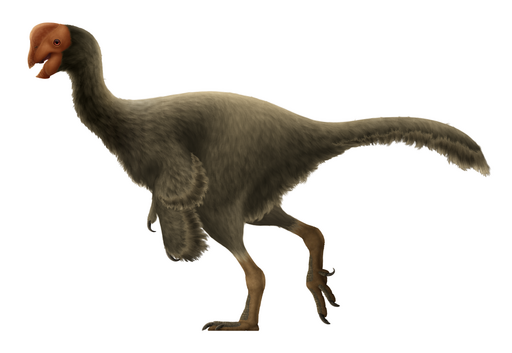The Egg Thief Dinosaur
Oviraptor was a fascinating and unusual dinosaur that lived during the Late Cretaceous period, around 75 million years ago.

| Meaning | Egg thief [Ovi-raptor] |
| Pronunciation | OH-vee-rap-tor |
| When: | Late Cretaceous (about 85–70 million years ago) |
| Where: | Asia (Mongolia) |
| What: | Theropod (Omnivorous, oviraptorid) |
| Weight: | Estimated around 20–30 kg (44–66 pounds) |
| Length: | Approximately 1.5–2 meters (5–6.5 feet) |
| Diet: | Likely omnivorous (ate small animals, eggs, and plants) |
| Discovered: | First described by Henry Fairfield Osborn in 1924 |
Its name means “egg thief,” given because the first fossil of Oviraptor was found near a nest of eggs, leading paleontologists to initially believe it was stealing them. However, further studies suggest that it was more likely protecting its own eggs or those of its species.
Oviraptor was relatively small, growing up to about 2 meters (6.6 feet) in length and weighing around 20 to 30 kilograms (44 to 66 pounds).
It had a distinctive beak-like mouth with no teeth, and its jaws were likely adapted for crushing or breaking shells. Oviraptor also had a crest on its head, which may have been used for display or species recognition.
Oviraptor is believed to have been an omnivore, feeding on a variety of foods, including small animals, plants, and possibly eggs.
